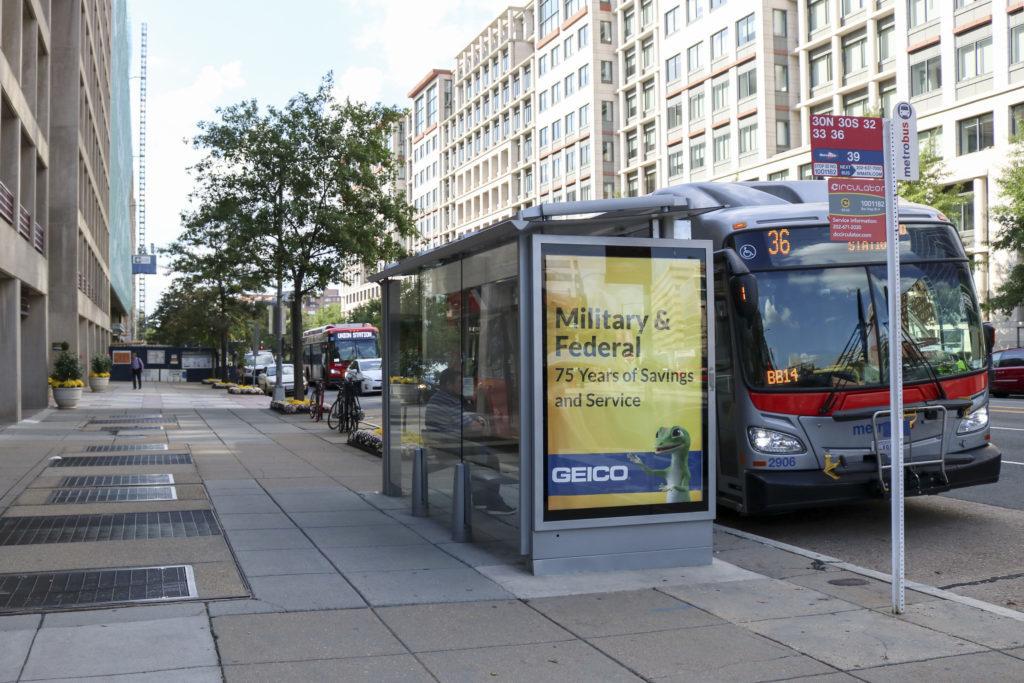D.C. Circulator buses may soon have fewer stops in Foggy Bottom as city officials propose condensing the bus route that travels through the area.
To prevent delays and congestion, the D.C. Department of Transportation suggested various changes, including eliminating bus stops along the route through Foggy Bottom to allow buses to move more quickly through the city. DDOT will be accepting public feedback on the proposal until Friday, according to a release.
Under the proposal, officials would remove eight stops along the Georgetown to Union Station route, according to DDOT’s 2017 Transit Development Plan.
Along the route, the agency has proposed removing the stop at Pennsylvania Avenue and 21st Street to speed up travel times.
D.C. Circulator Project Manager Circe Torruellas said the frequency of stops along the route often delays buses.
“We get a lot of complaints on on-time performance on this route partly because of congestion and partly because it’s stopping throughout the route,” Torruellas said in an interview.
DDOT inspected the Georgetown to Union Station route using data from 2014 through 2016 to detect ways to improve the route. The analysis revealed that this bus line has 0.5 to 1.2 more stops per mile than the four stops per mile recommended by the agency.
Torruellas said the Pennsylvania Avenue and 21st Street stop was deemed unnecessary because it was very close to other stops, like the one at Pennsylvania Avenue and 22nd Street, just one block west.
“It should not be stopping every single block if we want to make sure that it delivers quick and consistent service throughout the route,” she said.
The proposal also includes giving stop priority to the Pennsylvania Avenue, 20th and 22nd streets stops, which involves modifying transit signal timing, lengthening green lights and shortening red lights for buses and other transit vehicles. Although Circulator buses are not yet equipped with the technology necessary to make transit signal priority a reality, DDOT suggested adapting these stops now in preparation of future changes.
“They have proximity to the Foggy Bottom Metro station and proximity to the hospital as well as some of the main residential buildings of the GW campus,” Torruellas said. “So it allows for D.C. transfers for the riders that are connecting to and from the route.”
She said the stop priority designations are intended to make the connections to the Metro station and Metrobus routes “seamless to the rider.”
Torruellas said a public hearing process will occur in November or December based on the feedback DDOT receives about the proposal. Any changes ultimately agreed upon will not be put into effect until spring 2018.
Eve Zhurbinskiy, a senior and member of the Foggy Bottom and West End Advisory Neighborhood Commission, said removing the stop at 21st Street and Pennsylvania Avenue would not be much of an issue because there are other stops nearby.
“I don’t feel particularly strongly about the removal of the stop,” she said in an email. “On the whole, I think it will speed transit times, which does have the potential to make bus travel more attractive to students.”
ANC Chairman Patrick Kennedy said under the proposal he would lose the stop he typically uses, but he said he understood DDOT’s rationale for the change.
“The argument is that by consolidating these stops into the ones at 22nd and Penn., that buses will be able to experience travel time savings because they won’t have to stop as frequently,” Kennedy said in an email. “I credit that argument, at least a little bit, even though it means a bit longer walk for some of us.”





